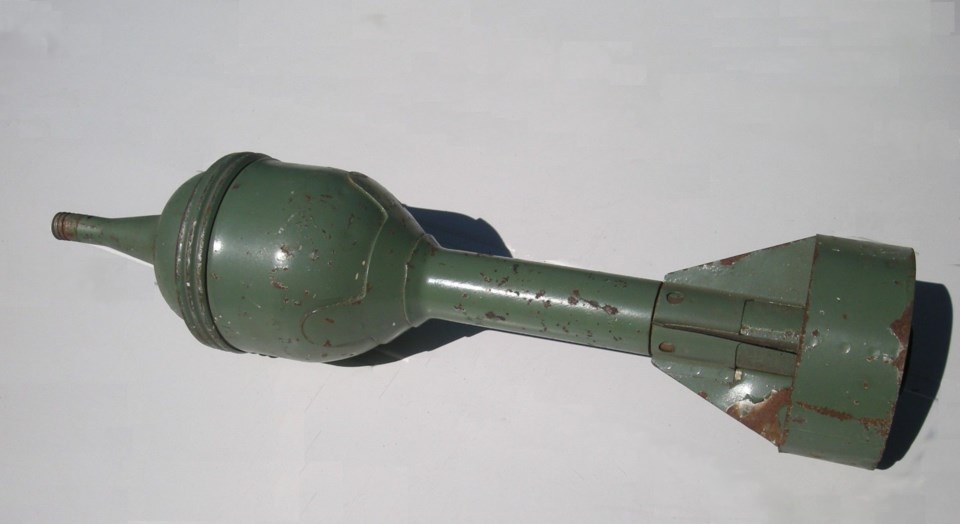Postcard Memories is a weekly series of historic postcard views and photos submitted by Marcel Rousseau.
Some were previously published by the Orillia Museum of Art and History and in the book Postcard Memories Orillia.
The production of war materials during the Second World War brought a boom to many of the industries in Orillia.
The Tudhope Specialties plant at the southwest corner of Colborne and West Street received a large contract to produce thousands of Piat anti-tank shells. There was a great need for a hand-held infantry anti-tank weapon and the Piat – “Projectile, Infantry, Anti-Tank” – was developed and entered into service in 1943.
It was used by Britain and its allies including the Canadian troops.
The Piat launcher consisted of a steel tube, a trigger mechanism and firing spring. Pulling the trigger released the spring to detonate the propellant in the tail of the shell. The launcher was 39 inches long and weighed 32 pounds and could be fired from the shoulder.
It was carried and used by a two-man team and had an effective range of 100 yards.
The luncher was made elsewhere but by the summer of 1944 the workers at Tudhope Specialties were in full production making shells. With the men off to war, it was the ladies of Orillia, with the help of a few men, who stamped, sanded, assembled, painted, inspected and shipped hundreds of Piat Shells weekly.
